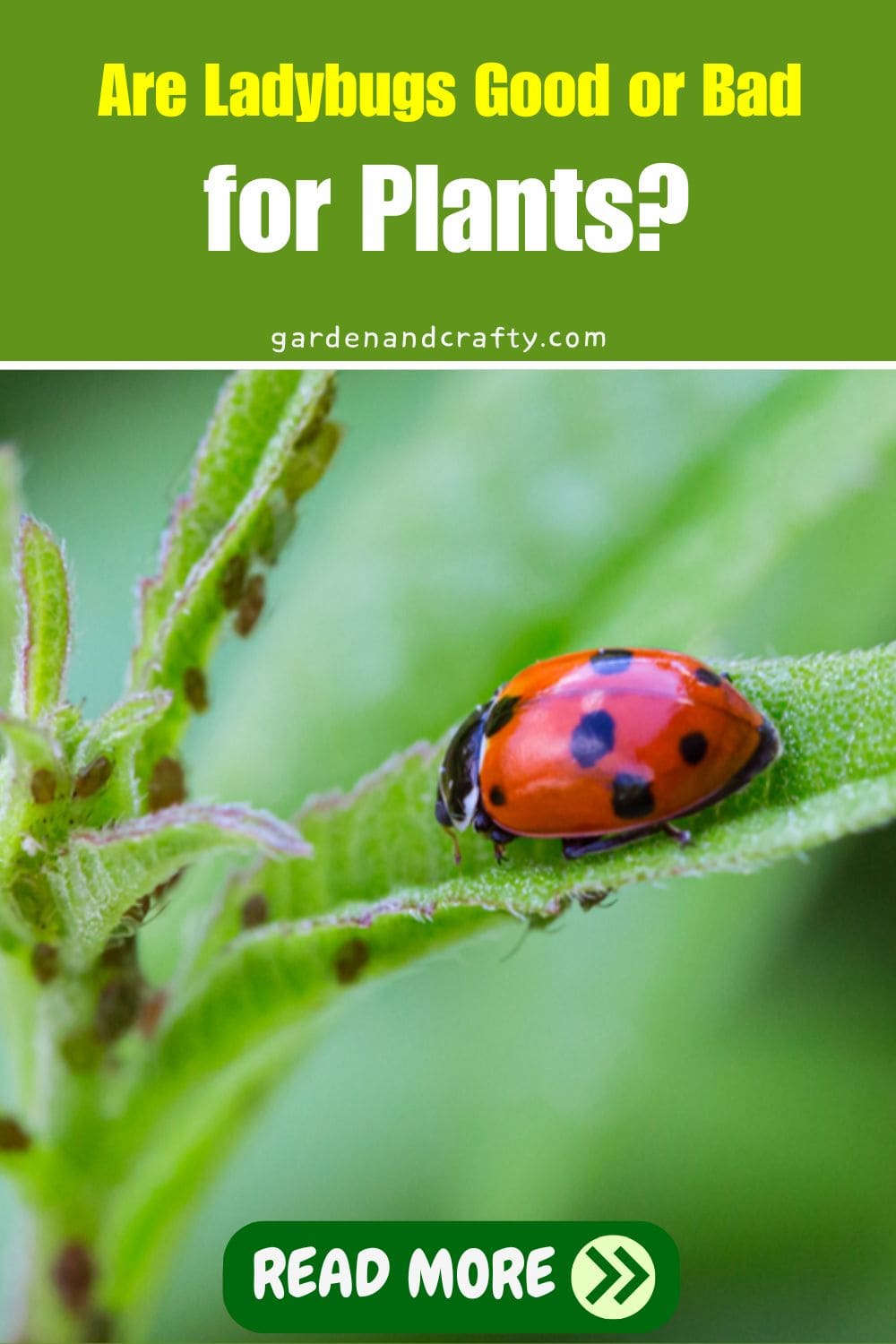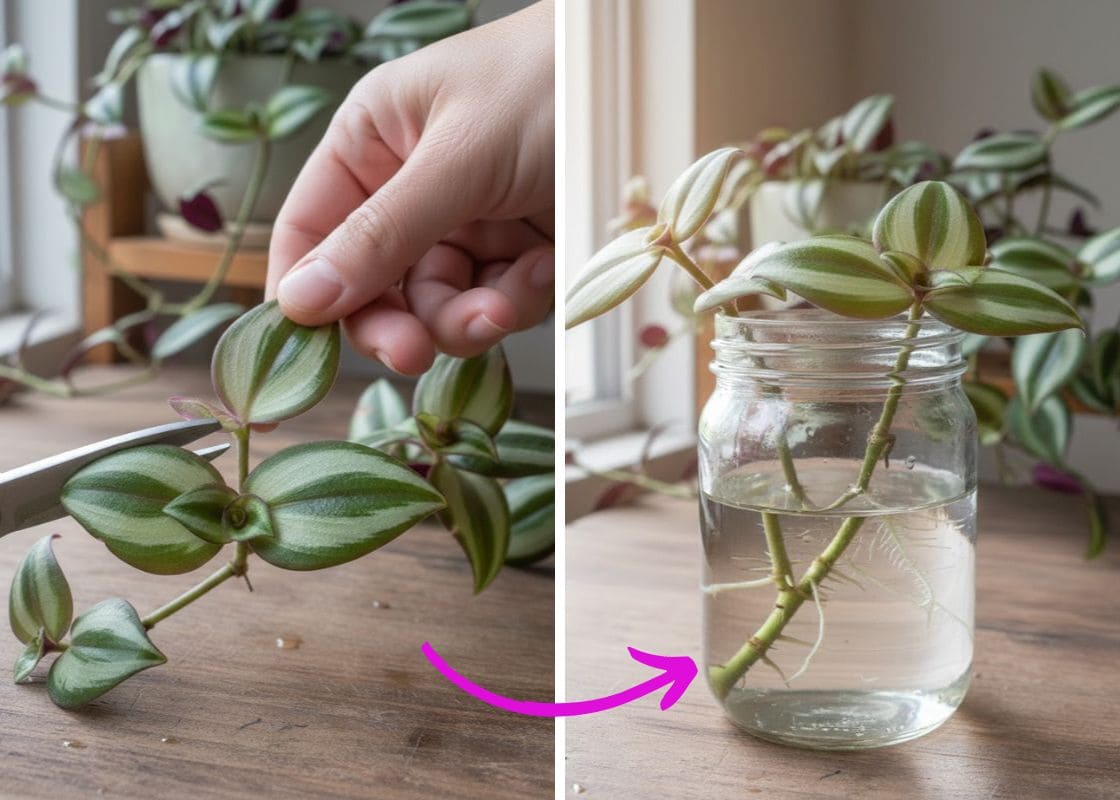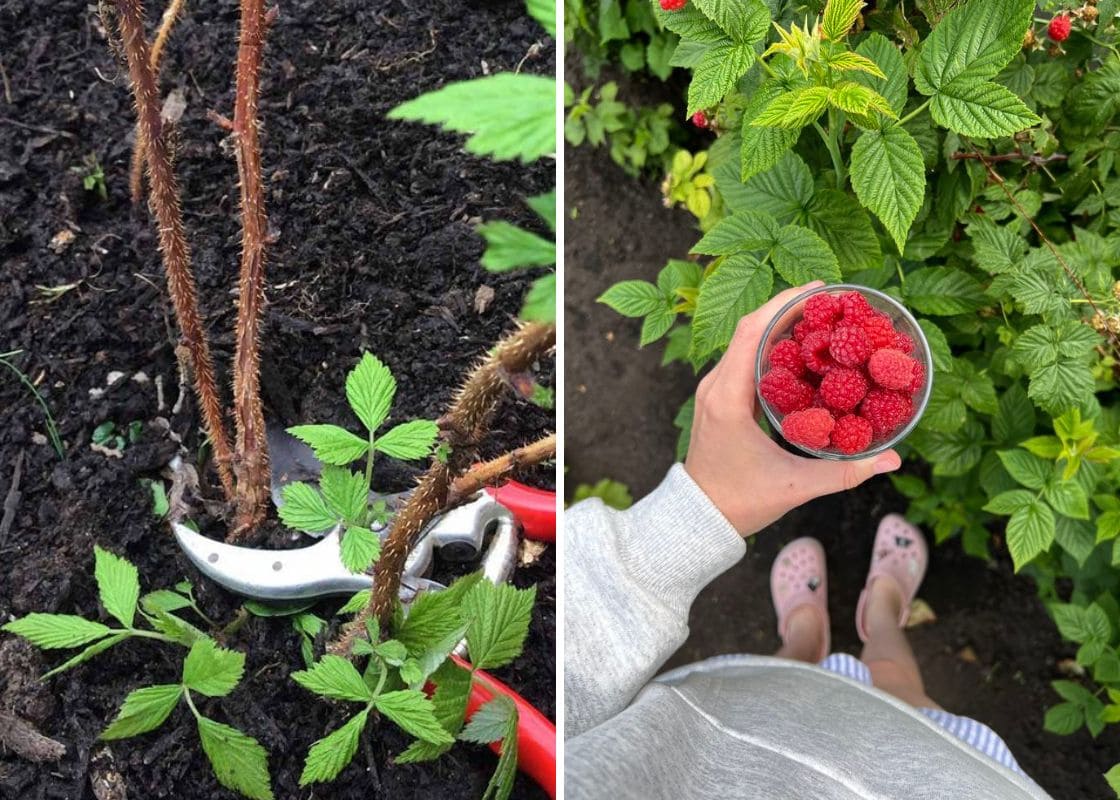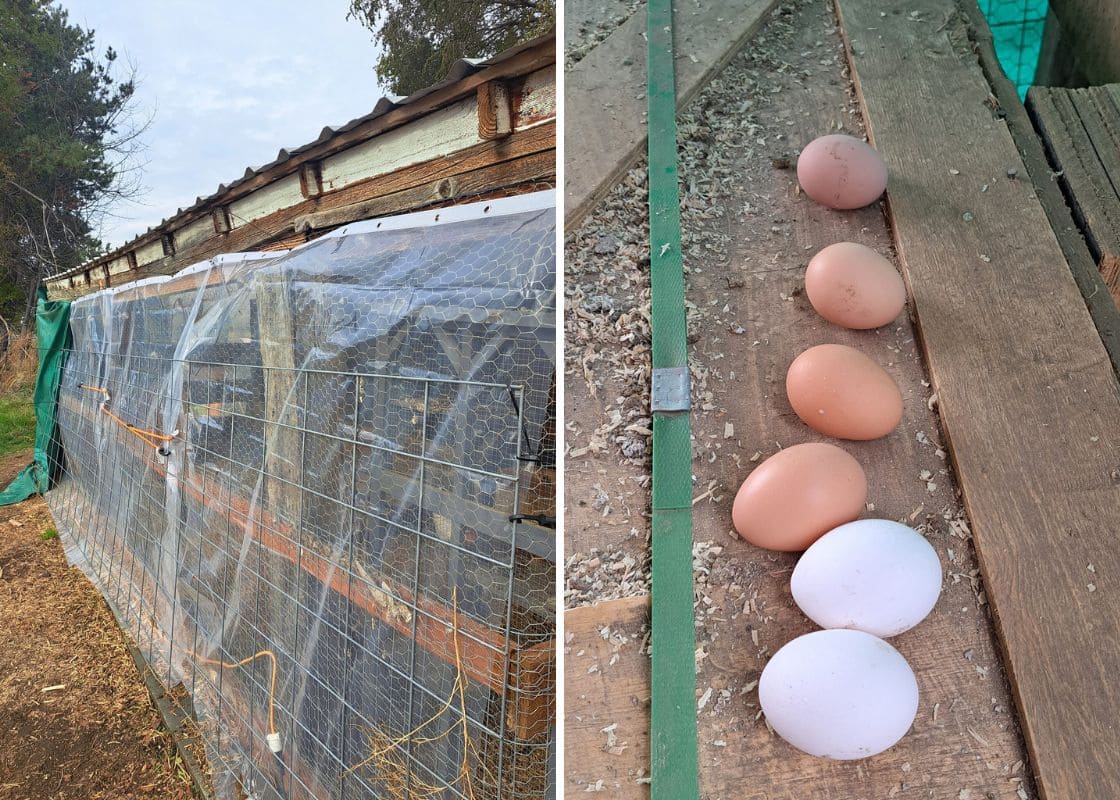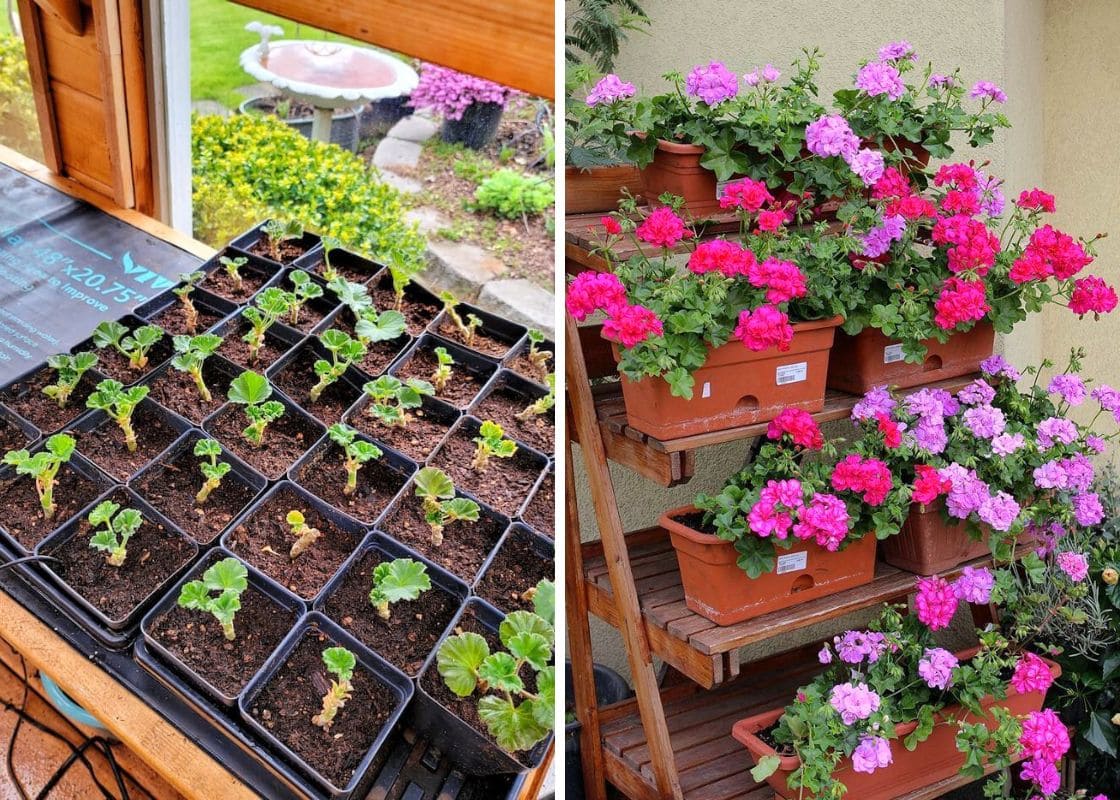Have you ever seen small spots of orange and black hidden among the leaves in your garden? Those tiny spots are likely ladybugs, also known as ladybirds or lady beetles.
I remember one summer when my roses were plagued by aphids, and a swarm of ladybugs appeared as if by magic, devouring the pests and saving my blooms.
From controlling pests to sometimes nibbling on plant leaves, my experience with ladybugs has shown me that their presence can be a blessing.
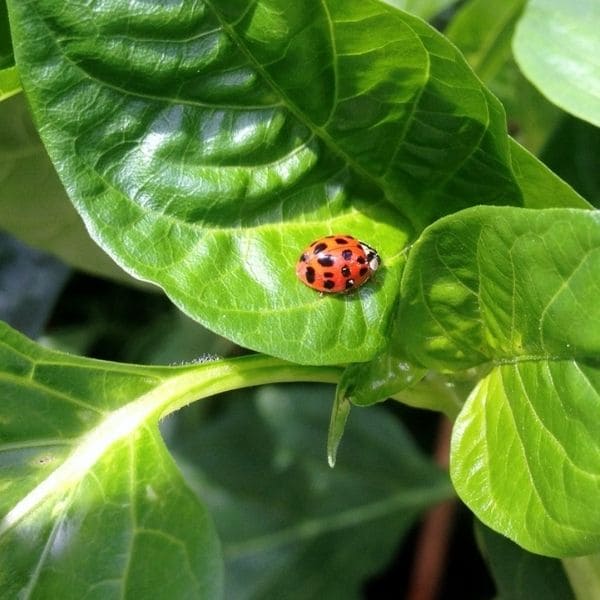
| Class | Insecta |
| Family | Coccinellidae |
| Color | Typically red or orange with black spots |
| Size | 1 to 10 millimeters in length |
| Lifespan | 1 year (on average) |
| Life Cycle | Egg – Larva – Pupa – Adult |
| Diet | Primarily aphids and other small insects |
| Habitat | Gardens, forests, fields, and grasslands |
| Native | Europe, Asia, North America |
Identifying Ladybugs
Overview of Ladybugs
Ladybugs belong to the Domain Eukarya, order Coleoptera, and family Coccinellidae. Ladybugs are typically small, ranging from 1 to 10 millimeters in size with their distinctive dome-shaped bodies.
Their vibrant red or orange shells with black spots make them easy to spot. They have six short legs and a pair of antennae, which they use to sense their environment.
The first time I saw a ladybug up close was a warm summer day, and the garden was in full bloom. The tiny, glossy body of the ladybug gleamed in the sunlight, its vibrant colors standing out against the green leaves.
I watched in awe as its delicate legs moved nimbly across a leaf, exploring every nook and cranny with playful curiosity. The intricate pattern of its spots surprised me because it is like a work of art.
Three Common Types of Ladybugs
#1. Good Ladybugs
Seven-spotted ladybugs and convergent ladybugs are in good ladybug type.
The seven-spotted ladybug, with its red shell and distinctive black spots, is a fierce predator of aphids. The convergent ladybug, easily recognized by the white lines on its thorax, also excels at pest control.
These ladybugs feed on soft-bodied insects, mites, and mealybugs, ensuring your plants remain healthy and vibrant.
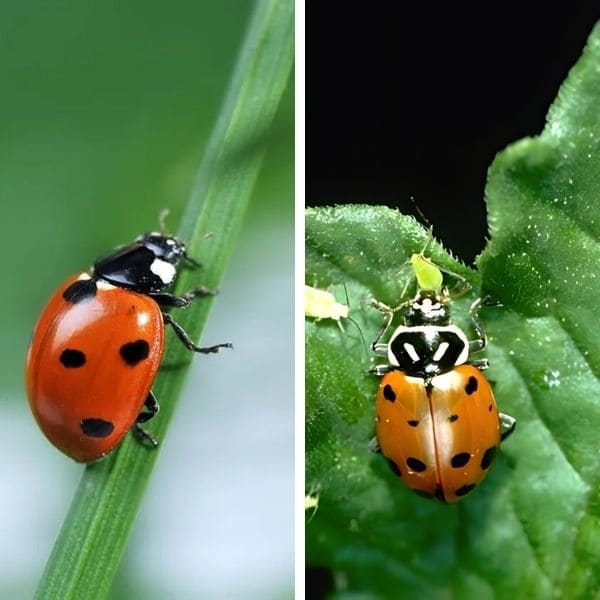
#2. Bad Ladybugs
Not all ladybugs are beneficial. In my garden, I’ve encountered the Asian ladybug, which can be problematic.
Unlike native species, these ladybugs can invade homes in large numbers during the fall. They have variable spot patterns and a more aggressive nature.
I’ve noticed they sometimes outcompete our local ladybugs and can even bite. While they still feed on pests like aphids, their invasive behavior and tendency to swarm indoors make them less welcome in the garden.
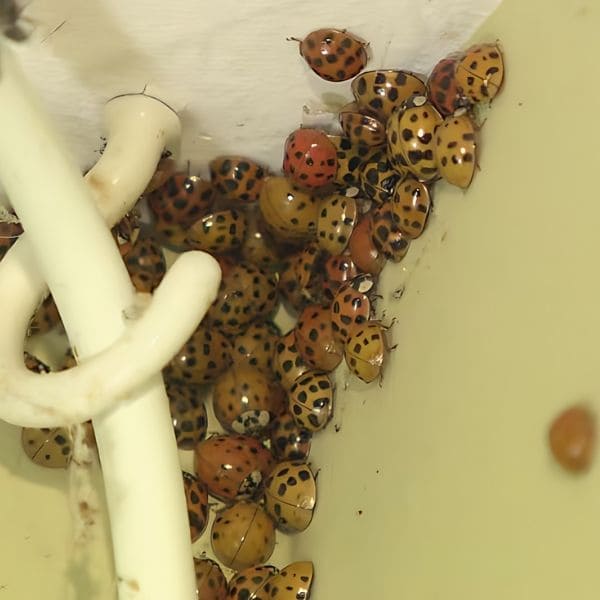
#3. Bright Ladybugs
The bright ladybugs are not only beautiful but also play essential roles in maintaining the garden’s health.
While the seven-spotted ladybug, with its bold red shell and distinct black spots, is a diligent aphid hunter, the twenty-spotted ladybug, smaller and adorned with numerous spots, often feeds on fungi rather than pests.
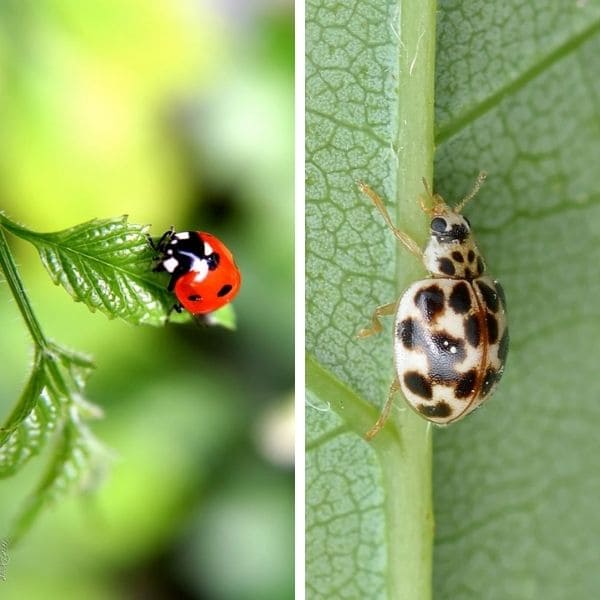
Are Ladybugs Good for Plants?
Yes. Ladybugs devour pests such as aphids, protecting your plants. They also help spread pollen and consume debris present on plants, contributing to overall plant health.
Although some can invade homes, their benefits for plant maintenance far outweigh the occasional drawbacks.
Natural Pest Control
If you’re a gardener, you know how pests can wreak havoc on your plants. I’ve faced countless battles with aphids and mites, draining the vitality from my beloved flowers and vegetables. Thankfully, ladybugs have come to my rescue more times than I can count.
These vibrant little beetles are voracious predators, devouring aphids and other harmful pests with gusto. Their presence can reduce use of chemical pesticides.
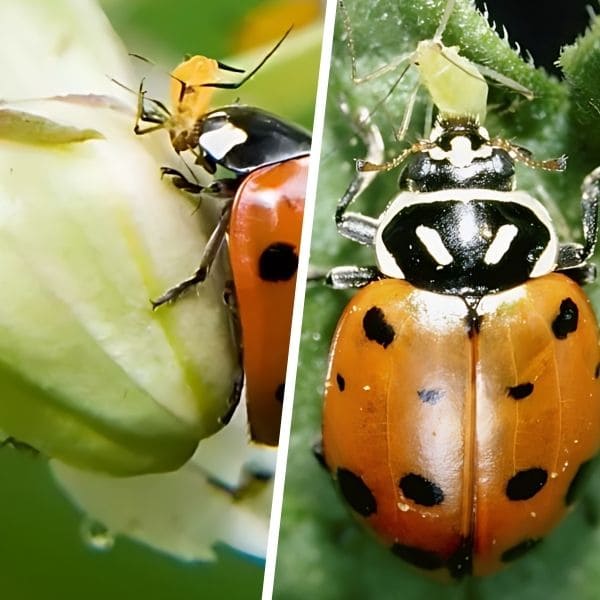
Pollination Assistance
Did you know that ladybugs can also help with pollination? While bees often get the spotlight as the garden’s main pollinators, ladybugs contribute significantly too.
In my garden, I’ve observed ladybugs feeding on nectar from flowers. As they move from bloom to bloom in search of food, they inadvertently transfer pollen, aiding in plant reproduction and fruit production.
But that’s not all! When ladybugs land on flowers, their tiny vibrations help loosen pollen, making it easier for transfer.
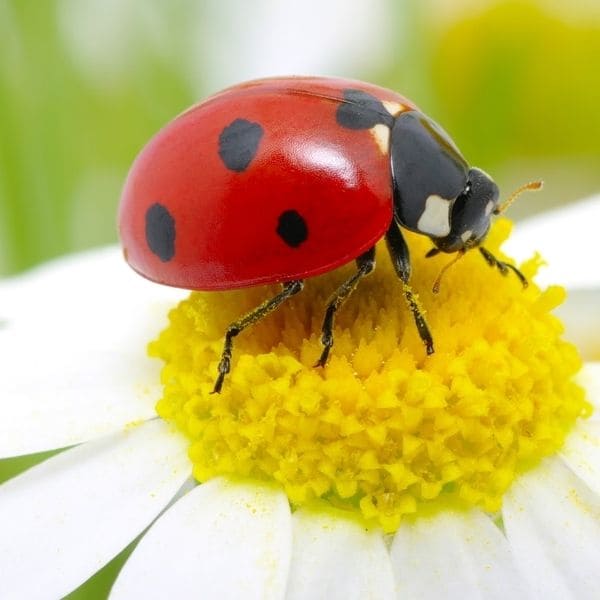
Ecological Benefits
These tiny beetles help keep aphids and other pests in check, which supports the health of my plants. By fostering a natural pest control system, ladybugs contribute to a thriving and diverse garden ecosystem.
Their presence not only keeps gardens healthy but also benefits agricultural systems by encouraging a robust and balanced environment.
How to Encourage the Good Ladybugs for Plants
Creating a Ladybug-Friendly Environment
Planting marigolds, dill, fennel, and yarrow can attract lots of ladybugs. These plants not only provide nectar but also attract aphids, which are a primary food source for ladybugs.
Additionally, plants like cosmos, dandelions, and scented geraniums are excellent choices. When I started incorporating these plants into my garden, I noticed a significant increase in ladybug visits.
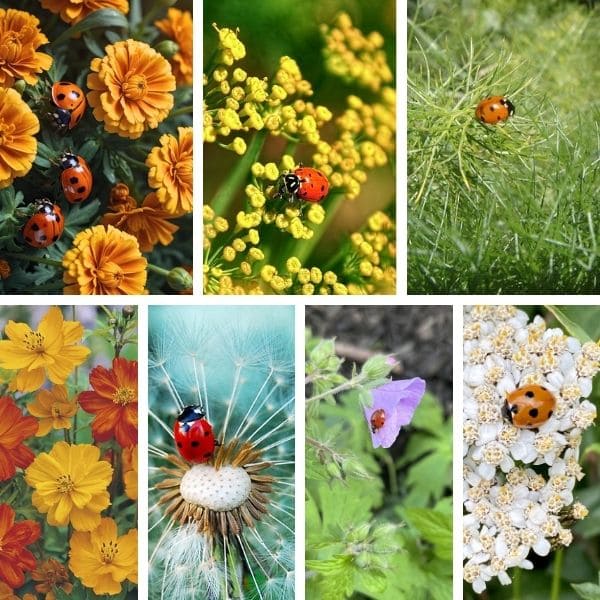
Besides, providing suitable habitats is also crucial for encouraging ladybugs to settle and thrive in your garden. Ladybugs need places to shelter and overwinter.
I’ve added small bundles of sticks, leaves, and straw in a quiet corner of my garden to create natural shelters. You can also use ladybug houses or simply leave some garden debris, like leaf litter and fallen branches, which provide excellent overwintering sites for ladybugs.
Natural Pest Control Strategies
Integrating ladybugs into an integrated pest management (IPM) approach is highly effective. Ladybugs devour aphids and other pests, reducing the need for chemical interventions.
It’s essential to avoid chemical pesticides, as they can harm these beneficial insects. Instead, you can use natural remedies and organic methods to keep pests at bay, ensuring ladybugs thrive and contribute to a healthier, more balanced garden ecosystem.
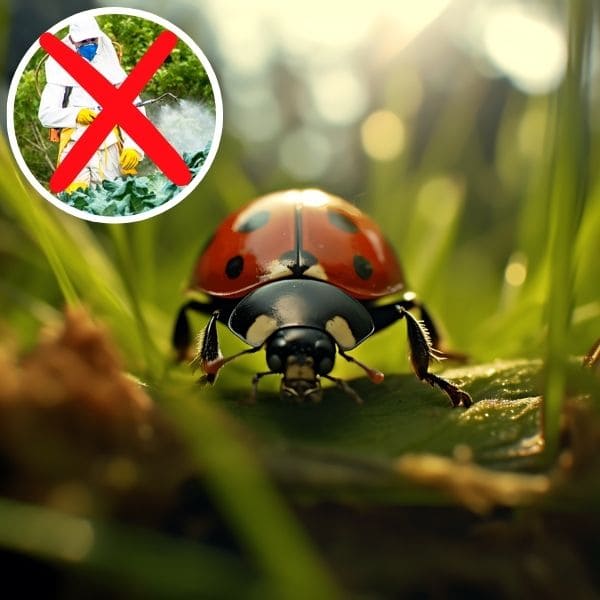
Purchasing and Releasing Ladybugs
Remember to buy ladybugs from reputable sources, ensuring they are healthy and effective. When selecting a supplier, you should look for those who provide ladybugs in their larval stage, as they tend to stay in the garden longer and are voracious eaters.
For a successful release, choose a sunny spot in your garden. Release them in the evening or early morning when it’s cooler to prevent them from flying away.
Before releasing, clear the area of debris and excess soil, dust it with a light layer of cornmeal, and scatter fresh rosemary or thyme. You can release them in groups of about 50, focusing on plants infested with aphids but avoiding those that might be damaged by their feeding.
FAQs
What should I do if ladybugs enter my house?
If ladybugs infest your home, gently collect and release them outside. Sealing gaps around doors and windows can help prevent them from entering your house.
How long do ladybugs live?
On average, ladybugs live between 1 to 2 years. The lifecycle from egg to adult typically takes 4 to 7 weeks, depending on the species and environmental conditions.
Why put ladybugs in the fridge?
Putting ladybugs in the fridge slows down their metabolism, making them less active. This technique is often used before releasing them into the garden, as it helps prevent them from flying away immediately and encourages them to stay and feed on pests.
Is it OK to keep a ladybug as a pet?
Yes, it is generally okay to keep a ladybug as a pet for a short period. They can be kept in a small container with air holes and supplied with damp paper towels and aphids or raisins as food. However, it’s best to release them back into the garden where they can thrive and help control pests.
Are black ladybugs OK?
Yes, black ladybugs are perfectly fine. They are simply a different color variation of ladybugs, often known as pine ladybirds or twice-stabbed lady beetles. They are also beneficial for controlling pests in your garden.
